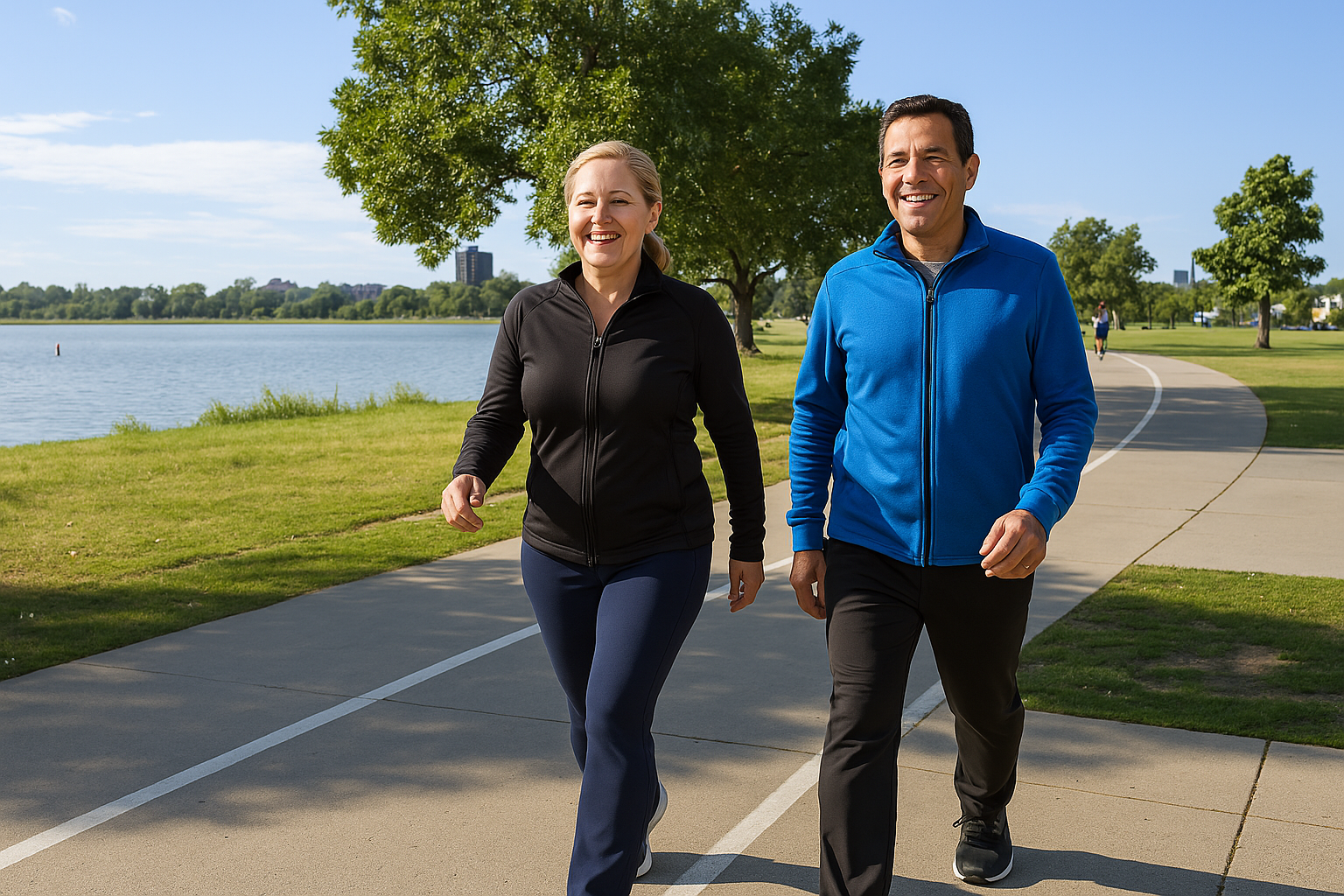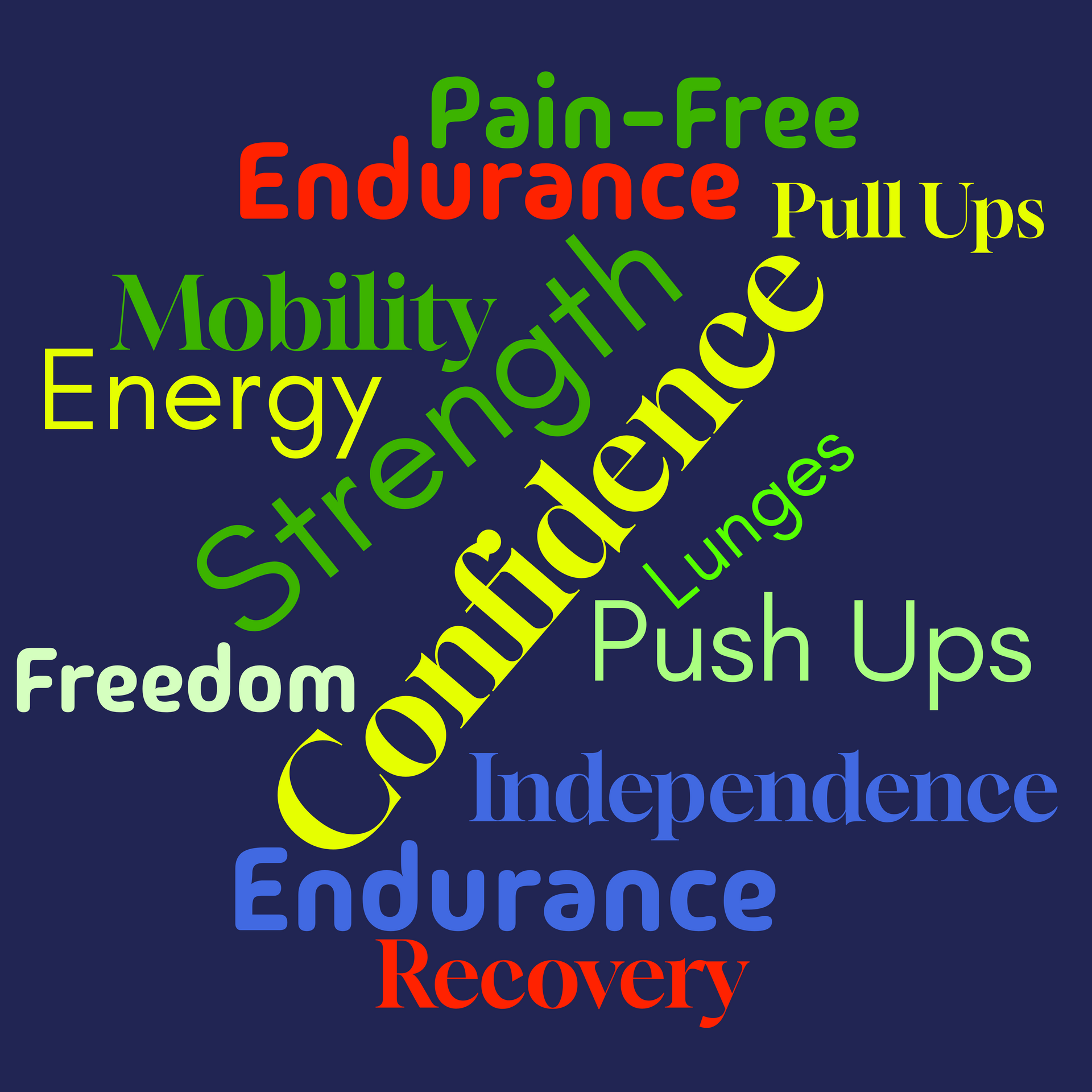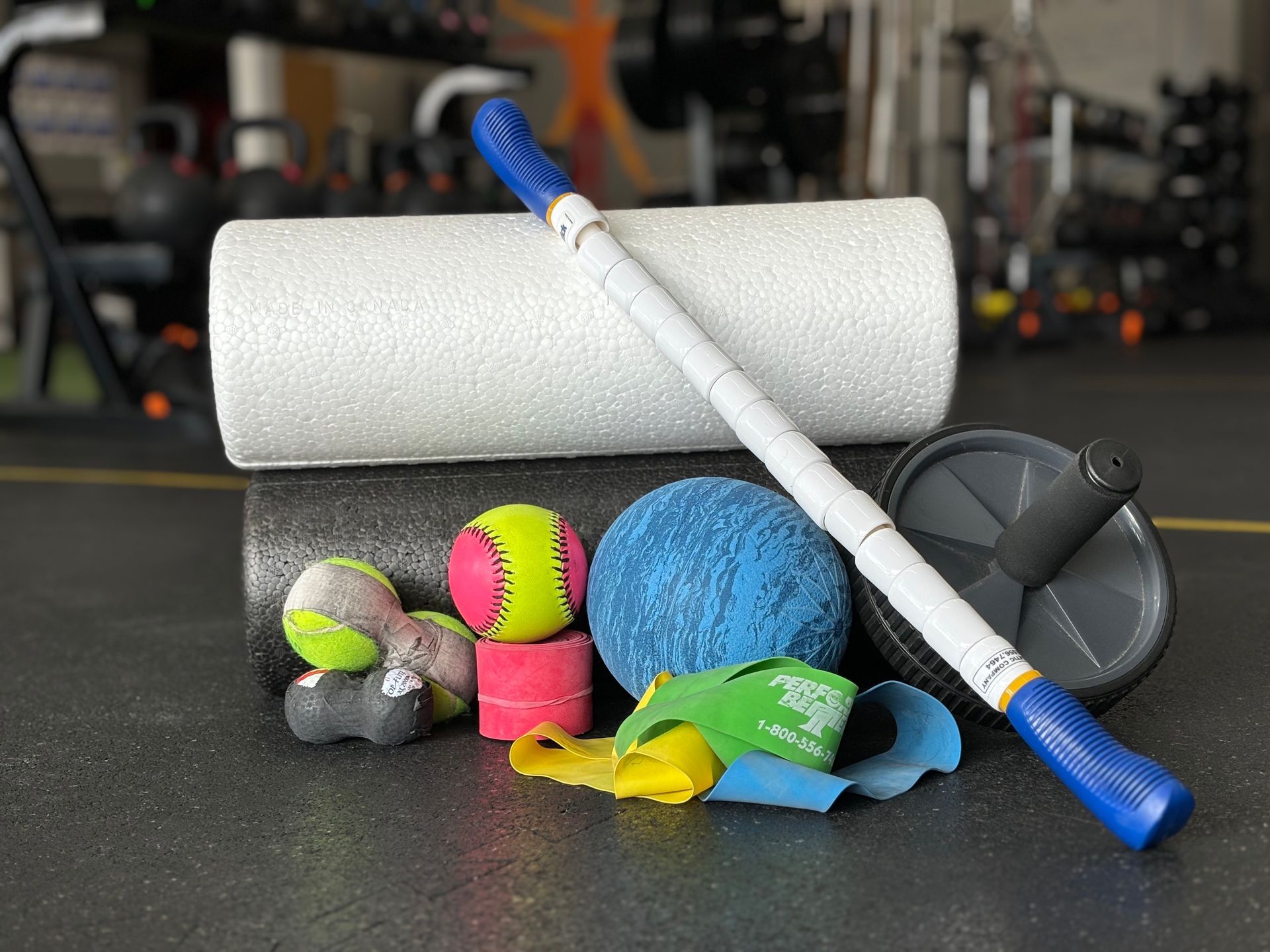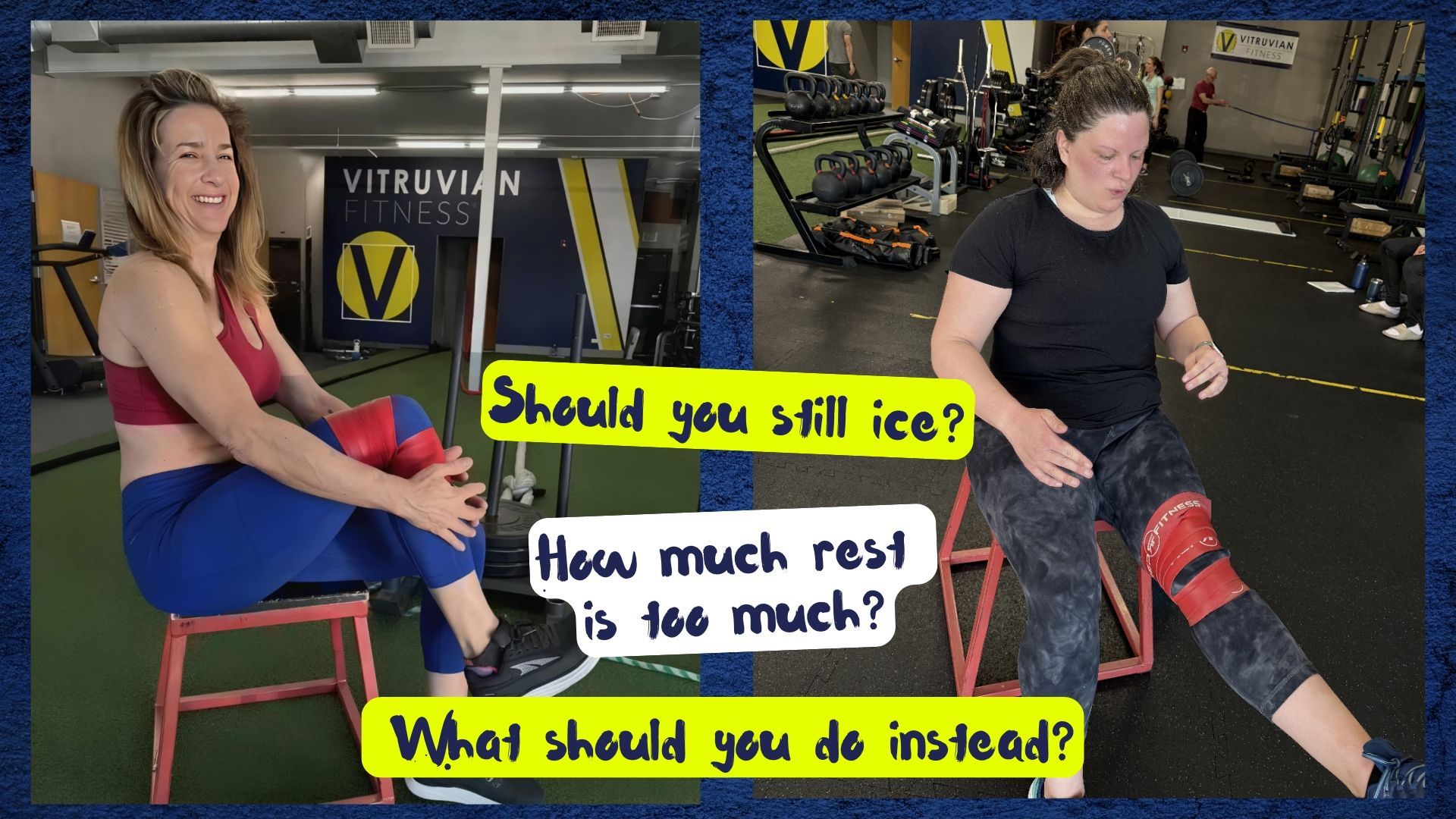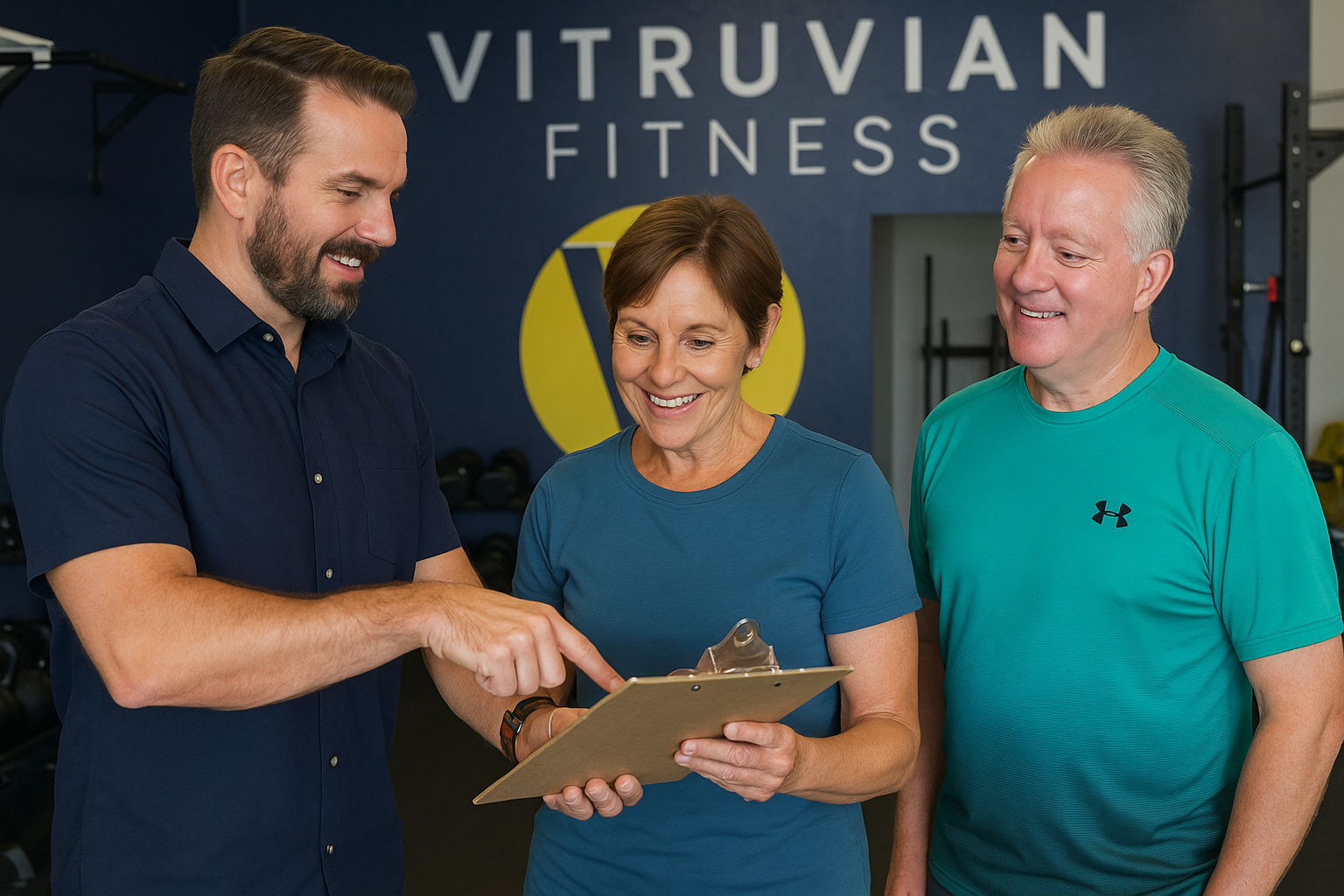How We Train at Vitruvian Fitness®
The 7 Phases of Functional Strength Training That Drive Long-Term Results
Here’s the shocking reality that most people don’t realize: the majority of gym-goers don’t know what they’re doing and they don’t have a plan – forget about having a 6-month training program that combines the learning of new things with progressive overload and skills-development. So, while maybe you thought you were the only one who was new to all this, I’m here to tell you that you’re in great company. And that’s fine—we’ve got a plan for you.
At Vitruvian Fitness, every workout you do is part of a bigger strategy. We use a phased approach—like chapters in a story—where each phase builds on the last. It’s a method used by top strength coaches called
periodization (that’s a technical term that you’re free to use if you like).
The short version? The key to making progress is about doing the right thing at the right time. Sometimes that just means learning how to move your body through space in an efficient, safe, and controlled fashion. Other times it’s to lift heavier. Other times it’s to move faster, longer, or with more athletic control.
Let’s break it down:
Onboarding + The FMS (Functional Movement Screen) - Our Introduction to Each Other

Every new member starts with us listening to your story about what you'd like to accomplish and what your experiences are. Then we take a detailed health and injury history plus an FMS—a simple movement screen that helps us spot strengths, weaknesses, and movement patterns that need tuning. It's not a test you pass or fail. It’s just how we make sure your program fits your body, not just any body. It’s a qualitative observation - not a quantitative one.
It’s like getting a map before a road trip. Better routes, fewer detours. Seriously, don’t be a dude and not ask for directions.
Phase 3: Movement Mastery & Intro Strength - The Lifting Begins
This phase is all about learning—how to move, how to breathe, how to take care of your soft tissues, and how to speak “strength training.” You’ll get to know squats, hinges, presses, and pulls—and how to do them
right.
Your job in this phase?
Learn the language. Learn the movements. Learn the system.

Everybody starts out in Phase 3 no matter how little or how much experience you have. If you have a lot to learn, this is the right place. If you’re really skilled, this is where you get to prove it. In either case, as soon as you’ve demonstrated your abilities, we'll move on, not just when the calendar says it’s time.
(What about phases 1 and 2? If you ask me in person, I’ll tell you!)
Phase 4: Building Strength - It Starts to Get Heavy

Now we get to add some weight. You’ve got the patterns down—let’s put them to work. We start loading the movements with the goal of building full-body strength.
Ask yourself this:
“Could I do more than 12 reps with this weight?” If yes, it’s time to go heavier.
This isn’t about ego-lifting. It’s about pushing your boundaries, one smart choice at a time. We’ll be watching. If your reps are sloppy or you’re cruising too easily, we’ll nudge you to dig in. And if you’re not quite ready to push yet, no worries—we’ll keep reinforcing the base.
Key to success: the weight should be light enough to lift it 8 times but too heavy to lift 12. As always, with perfect form.
Phase 5: Maximum Strength - It Got Really Heavy
This is where we chase real strength gains. Lower reps, longer rests, way heavier loads. We’ve built the foundation—now we’re asking your body to get to work.
Your instruction?
Go heavier. We’re not here to play tiddlywinks.

We’ll challenge your nervous system and your muscles. You’ll surprise yourself with what you can lift, as long as the form stays clean. Not there yet? We’ll stay in Phase 4 and keep sharpening the sword. No skipping steps.
Key to success: the weight should be light enough to lift it 5 times but too heavy to lift 8. As always, with perfect form.
Ready
to Build Strength the Way that's Best for You?
Our 14-Day Trial introduces you to strength training that’s gentle, effective, and personalized.
Phase 6: Power - Pow, Boom, Bang
Here’s where it gets fun: move weight FAST. Power = force × speed. We lower the weight, increase the tempo, and focus on explosive movement. Med balls, jumps, slams, swings, cleans, and snatches—this is the phase where you start to feel athletic.
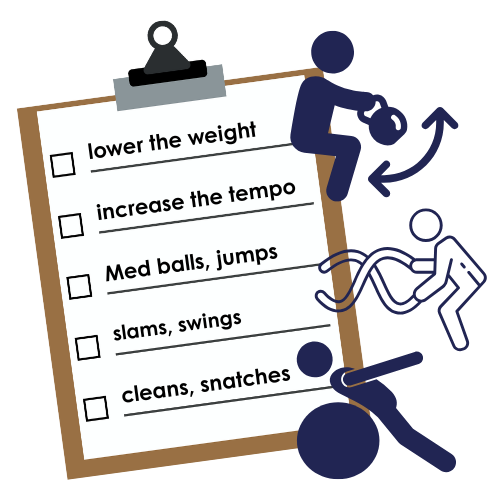
Focus here:
Move like you mean it—fast, sharp, under control.
You’re translating all that strength you built into real-world agility and explosiveness. But remember: speed only counts if you’re moving well. If it gets messy, we’ll pull back and clean it up before pressing forward. Keywords in this phase are: speed, velocity, acceleration, power, force. Keywords not in this phase: pattycake, hopscotch, or peek-a-boo.
Key to success: Before you think about going up in weight, are you in control and moving as explosively as possible?
Phase 7: Muscular Endurance - On and On, Don’t Stop Until the Break of Dawn
Time to see what your body can handle when the going gets tough. Higher reps, lighter weights, shorter rests—and zero room for quitting early. It’s about training your muscles to go the distance.
Mental cue:
This is about grit. Can you keep your form under fatigue? That’s endurance.
You’re not just training your body—you’re training your head. Stamina and resilience are the secret sauce to sustainable fitness.
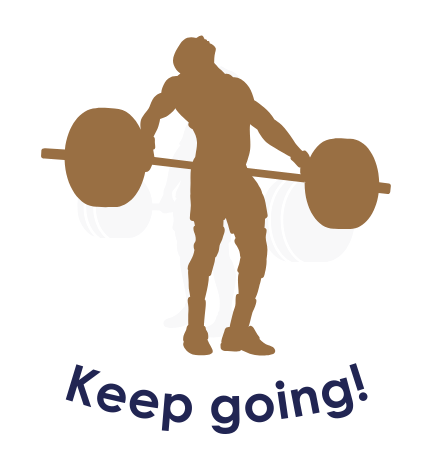
Key to success: Pick a combination of weights that you can move all day. Keep moving, minimal rest, high volume, long durations.
Phase 8: Athletic Development - Any Given Sunday

This is where all the pieces come together—strength, coordination, power, agility, balance, and control. You don’t have to be an athlete to train like one but it sure is fun! This phase is useful whether you’re chasing PRs, podium seeking, playing recreational sportsball, or just trying to keep up with your kids without pulling a hammy.
Your goal:
Move with intent. React, stabilize, balance, adjust—on command.
We’ll throw you curveballs—literally and metaphorically. If you can handle complexity and movement under pressure, you're ready to level up.
Key to success: Train as if: as if you’re a 7-figure athlete; as if you’re trying to make the school team; as if you’re in the Olympics; as if it matters. And remember to stick the landing.
Phase 9: High-Intensity Interval Training (HIIT) - Fireworks
This is our sprint finish. HIIT means short, intense efforts followed by short recovery windows. Think: 20 seconds of all-out work, 10 seconds of rest—repeat.
Your instruction?
Go hard, then recover. Then go again. That’s the game.

This phase torches calories, builds cardio capacity, and makes everything else feel a little easier. It’s not just about working harder—it’s about working smarter.
Key to success: Go as hard as you can go safely and smartly. However, if you can go as hard on the last round as you went on the first round, you weren’t going hard enough. Burn all the matches up front and finish with whatever you’ve got left.
After Phase 9: Back to 4 - Deja Vu All Over Again
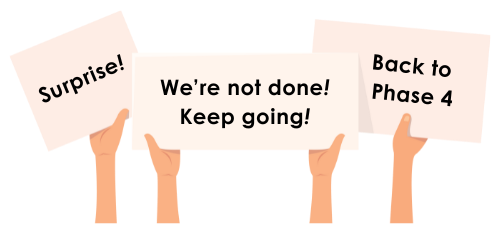
Surprise—we’re not done. You circle back to Phase 4, bringing everything you’ve gained with you. Stronger, sharper, more conditioned—you’re not starting over, you’re starting ahead.
This is what progress looks like:
Repeat the cycle,
with higher standards, better awareness, and more resilience every time.
Final Word - Just Kidding, I Can Talk About This All Day
Some people move through these phases quickly. Others need more time to master a phase before moving on. That’s normal—and it’s why we don’t rush anything. We watch your form, your effort, and your progress. If you’re not moving better, we won’t pretend that you are. Progress is earned, not assumed.
Here’s the truth: Most people walk into a gym with no real plan, no system, and no idea what to focus on. That’s not a judgment—it’s just the reality. And while the internet, your social media feed, or a generic group workout can offer “exercises,” they can’t offer a training strategy built around your body, your needs, and your goals.
That’s what we do.
At Vitruvian Fitness, we build personalized strength training programs that blend corrective exercise, purposeful progression, and smart coaching to get you stronger, healthier, and more capable—no matter where you’re starting from.
Just ask ChatGPT - it knows.
You’ll find it here.
Ready
to Build Strength the Way that's Best for You?
Our 14-Day Trial introduces you to strength training that’s gentle, effective, and personalized.
You might also enjoy these posts . . .

